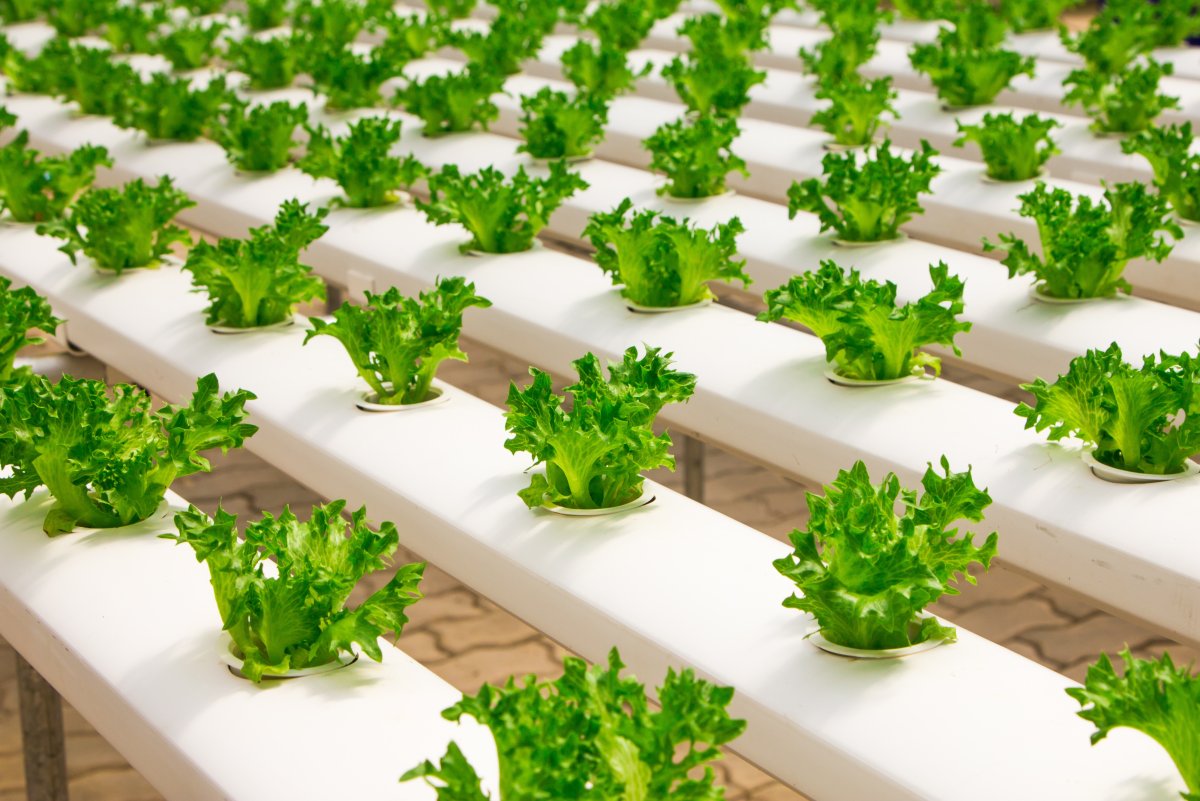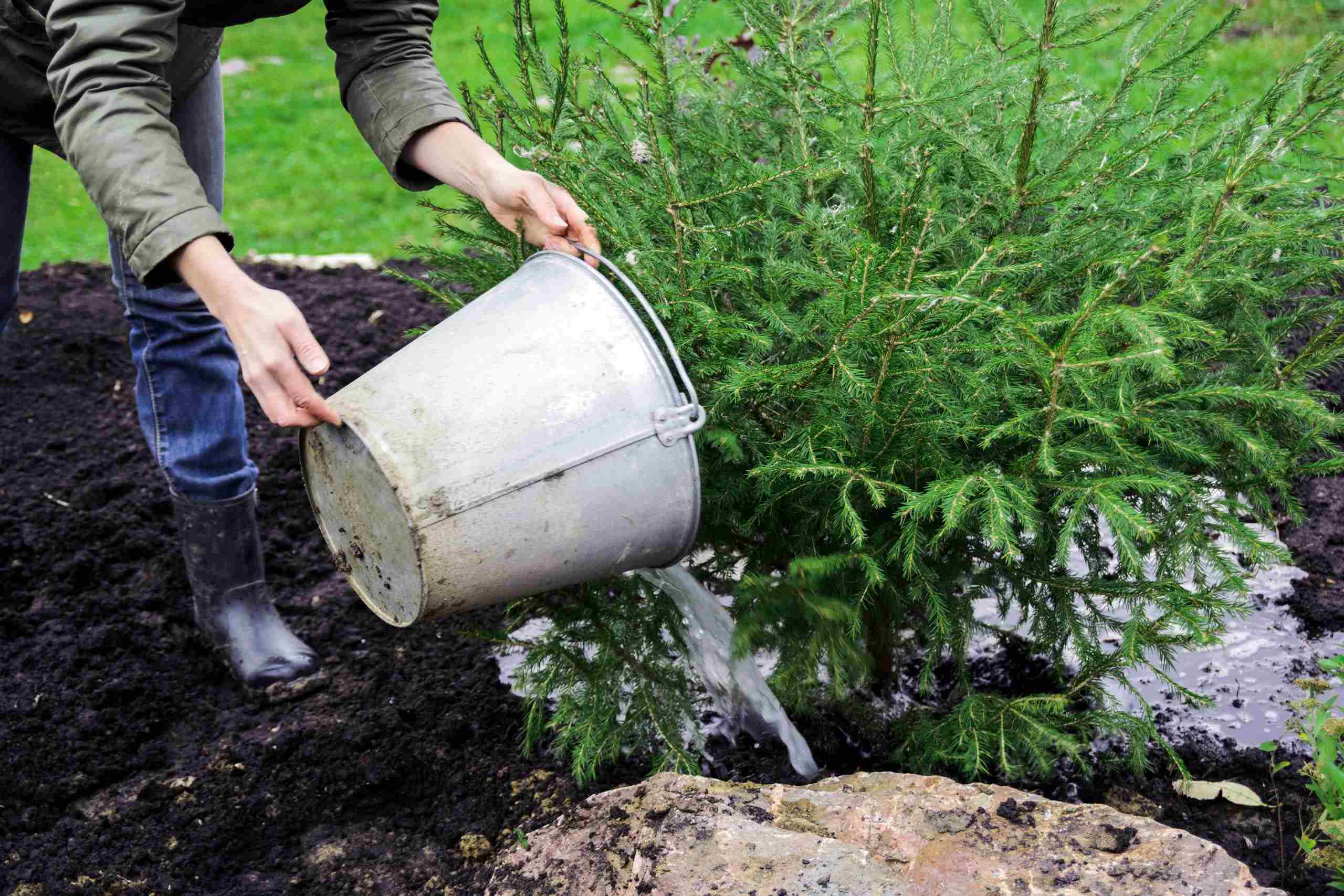Home>Gardening Basics>Understanding Soil>What Areas Would Most Likely Have The Deepest Layer Of Topsoil?


Understanding Soil
What Areas Would Most Likely Have The Deepest Layer Of Topsoil?
Modified: January 22, 2024
Learn the importance of understanding soil and discover which areas are likely to have the deepest layer of topsoil.
(Many of the links in this article redirect to a specific reviewed product. Your purchase of these products through affiliate links helps to generate commission for Chicagolandgardening.com, at no extra cost. Learn more)
Table of Contents
Introduction
Welcome to the fascinating world of soil! While often overlooked, soil plays a crucial role in supporting life on Earth. It is the foundation upon which plants grow and thrive, providing essential nutrients and water. Understanding soil is essential for gardeners, farmers, and environmentalists alike, as it helps us optimize agricultural practices and protect our natural resources.
One key aspect of soil that we will explore in this article is topsoil depth. Topsoil refers to the uppermost layer of soil, usually ranging from a few inches to a few feet in depth. It is the layer that contains the highest concentration of organic matter and vital nutrients necessary for plant growth.
Topsoil depth varies across different regions, influenced by a range of factors, including climate, geological processes, vegetation cover, and human activities. In this article, we will delve into these factors and their impact on topsoil depth.
Join us as we uncover the secrets of topsoil depth and gain a deeper understanding of this vital component of our planet’s ecosystem.
Definition of Topsoil
Before we explore the factors influencing topsoil depth, let’s establish a clear understanding of what topsoil actually is. Topsoil is the uppermost layer of soil, typically found in the top 5-10 inches (12-25 centimeters) of the Earth’s surface. It is often referred to as the “A horizon” in soil science.
Topsoil is rich in organic matter, including decayed plant and animal materials, which provide essential nutrients to support plant growth. This layer also houses a thriving community of microorganisms, such as bacteria and fungi, that play a vital role in nutrient cycling and soil health.
The composition of topsoil can vary depending on factors such as location, climate, and vegetation cover. In general, it is a mixture of mineral particles, organic matter, water, and air. The mineral particles, such as sand, silt, and clay, give the soil its texture, while the organic matter contributes to its fertility and ability to retain moisture.
Topsoil is crucial for plant growth as it acts as a reservoir for nutrients and water. It also provides a hospitable environment for plant roots to penetrate and anchor themselves, allowing plants to access the necessary resources for growth and development. Without a sufficient depth of topsoil, plants may struggle to establish themselves and thrive, leading to decreased agricultural productivity and ecosystem health.
Now that we have a clear understanding of what topsoil is, let’s dive deeper into the various factors that influence its depth and composition.
Factors Affecting Topsoil Depth
Several factors contribute to the depth of topsoil in a particular area. Understanding these factors is essential for managing and preserving topsoil resources. Let’s explore some of the key factors that influence topsoil depth:
- Climate: Climate plays a significant role in topsoil formation. Regions with abundant rainfall and temperate climates tend to have deeper topsoil compared to arid regions. The water availability in these regions promotes the growth of vegetation, leading to the accumulation of organic matter and deeper topsoil.
- Geological Processes: Geological processes, such as weathering and erosion, can affect topsoil depth. Over time, the movement of glaciers, wind, and water can transport away the topsoil layer, leading to a thinner layer of topsoil. Conversely, the deposition of sediments from these geological processes can contribute to the formation of new topsoil.
- Vegetation Cover: The presence of vegetation greatly influences topsoil depth. Plants contribute organic matter through their decaying leaves, roots, and other debris. This organic matter enriches the soil and increases its depth. The roots of plants also help bind the soil particles together, preventing erosion and maintaining topsoil integrity.
- Human Activities: Human activities can have a significant impact on topsoil depth. Intensive agricultural practices, such as excessive tilling and overuse of chemical fertilizers, can degrade topsoil, leading to erosion and reduced depth. Deforestation and urbanization can also strip away topsoil, exposing the subsoil layer and diminishing topsoil depth.
These are just a few of the many factors that influence topsoil depth. It’s important to consider these factors when implementing land management practices to protect and enhance topsoil resources.
The Role of Climate in Topsoil Formation
Climate plays a crucial role in the formation and development of topsoil. The combination of temperature, precipitation, and other climatic factors determines the rate of weathering and erosion, the growth of vegetation, and the accumulation of organic matter. All of these processes directly impact the depth and fertility of topsoil in a given area.
Regions with moderate temperatures and adequate rainfall are generally more favorable for topsoil formation. The consistent moisture availability allows for the breakdown of rocks and minerals, a process known as weathering. This weathering releases essential nutrients that enrich the topsoil, making it more suitable for plant growth.
Rainfall also plays a crucial role in the transportation of nutrients through a process called leaching. When water percolates through the soil, it can carry away soluble nutrients, depositing them in deeper layers. This process, known as leaching, can contribute to the enrichment of the subsoil, while the topsoil remains nutrient-rich and deep. In regions with excessive rainfall, however, excessive leaching can lead to nutrient loss and a shallower topsoil layer.
Conversely, arid and semi-arid regions with limited rainfall face greater challenges in topsoil formation. The lack of moisture limits the weathering and breakdown of rocks, resulting in a slower nutrient release. These regions often have thinner topsoil layers and may require additional amendments, such as organic matter or irrigation, to improve fertility and depth.
Furthermore, the intensity and frequency of rainfall influence erosion rates. Heavy rainstorms can cause erosion, washing away the topsoil and reducing its depth. This is particularly problematic in areas with steep slopes or inadequate vegetation cover, as they are more susceptible to soil erosion.
Overall, climate plays a significant role in topsoil formation, determining the availability of moisture, the rate of weathering, and the vulnerability to erosion. By understanding the climatic factors at play, we can better manage and protect our topsoil resources, ensuring their long-term sustainability.
Geological Processes and Topsoil Depth
Geological processes have a profound influence on the depth and composition of topsoil. Over millions of years, these processes shape the Earth’s surface, affecting the distribution and characteristics of soil layers.
One significant geological process is weathering, which involves the breakdown and alteration of rocks and minerals. Weathering can occur through physical, chemical, or biological means. Physical weathering, such as freeze-thaw cycles or the action of roots, breaks down rocks into smaller particles. Chemical weathering occurs when minerals react with water, oxygen, or acids, leading to their decomposition. Biological weathering is caused by the activities of organisms, such as bacteria and fungi, that break down organic and inorganic material.
Weathering contributes to the formation of topsoil by breaking down rocks and releasing minerals into the soil. As weathering continues, these mineral-rich particles accumulate and mix with organic matter, creating a fertile layer of topsoil. The rate of weathering depends on factors such as temperature, moisture, and the type of rock or mineral present.
Erosion, another geological process, can affect topsoil depth. Rainfall, wind, and flowing water can carry away soil particles from one place to another. This movement of soil can result in the loss of topsoil layers. Areas with steep slopes are particularly vulnerable to erosion as gravity and water flow contribute to the removal of soil particles.
However, geological processes are not solely responsible for the loss of topsoil. Some geological events, such as volcanic eruptions or the deposition of sediment from rivers or glaciers, can also lead to the formation of new topsoil. These events can bring in fresh mineral particles and organic matter, creating fertile soil layers.
The geological history of an area also plays a role in determining the depth of topsoil. Regions with a long history of geological activity, such as tectonic movements or glaciation, may have thicker topsoil layers due to the accumulation of sediments over time. On the other hand, areas with recent geological events or little geological activity may have shallower topsoil layers.
Understanding the geological processes and history of an area is crucial for managing topsoil resources. By considering factors such as weathering, erosion, and geological events, we can implement strategies to protect and enhance topsoil depth and fertility.
Vegetation and Topsoil Depth
Vegetation plays a vital role in the development and maintenance of topsoil depth. The presence of plant life influences key soil processes and contributes to the accumulation of organic matter, fostering a deeper layer of topsoil.
One of the primary ways vegetation affects topsoil depth is through the addition of organic matter. When plants shed leaves, stems, and other organic materials, they contribute to the build-up of organic matter on the soil surface. Over time, this organic matter decomposes, enriching the soil with essential nutrients and increasing its fertility. As this process continues, a thicker layer of topsoil develops, providing an optimal environment for plant roots to grow and access nutrients.
The roots of plants also play a crucial role in maintaining topsoil depth. As plants grow, their roots penetrate the soil, creating channels and pores. These root channels promote water infiltration, preventing surface runoff and enhancing the penetration of rainfall into the soil. This process helps to maintain soil moisture levels, contributing to the development of deeper topsoil.
Additionally, plant roots contribute to soil aggregation. They secrete substances that act as natural glues, binding soil particles together into aggregates. These aggregates improve soil structure and stability, preventing erosion and preserving topsoil integrity. The network of roots also anchors the soil, reducing the risk of soil displacement during heavy rainfall or wind events.
Furthermore, different types of vegetation have varying effects on topsoil depth. Trees, for example, can have a significant impact due to their extensive root systems and long lifespan. Trees contribute a large amount of organic matter through their fallen leaves, branches, and woody debris, which promotes the development of deep topsoil layers. Moreover, the shade provided by trees helps to reduce evaporation, maintaining soil moisture and supporting the growth of a diverse community of microorganisms.
In contrast, areas with sparse or no vegetation often have shallower topsoil due to the absence of organic inputs and poor soil development. Excessive soil exposure without vegetation cover leaves the soil vulnerable to erosion, resulting in the loss of topsoil and reduced depth.
By recognizing the importance of vegetation in topsoil development, we can implement practices that promote the growth of vegetation in areas where topsoil depth is a concern. This includes reforestation efforts, planting cover crops, and implementing appropriate agricultural practices that prioritize soil health and organic matter input.
Human Activities and Topsoil Depth
Human activities have a significant impact on topsoil depth, often leading to its degradation and reduced fertility. While we rely on the soil for agriculture and other purposes, unsustainable practices can result in the loss of topsoil and a shallower layer overall.
One of the primary factors contributing to topsoil loss is improper land management practices, particularly in the field of agriculture. Intensive farming methods, such as excessive tilling, can disrupt the structure of the soil and promote erosion. When the soil is repeatedly disturbed, it becomes more susceptible to wind and water erosion, resulting in the loss of topsoil. Additionally, the use of heavy machinery can compact the soil, reducing its ability to absorb water and nutrients, further hindering topsoil development.
The overuse of chemical fertilizers and pesticides can also harm topsoil depth. While these substances may initially enhance crop growth, they can negatively impact soil health in the long run. Excessive use of fertilizers can lead to an imbalance in nutrient levels and disrupt the natural processes in the soil, inhibiting the formation of a deep and fertile topsoil layer. Pesticides, particularly those with long-lasting residues, can harm beneficial soil organisms, disrupting soil ecosystems and impacting nutrient availability.
Deforestation is another human activity that affects topsoil depth. When forests are cleared for agricultural or urban development purposes, the protective canopy is lost. Without the cover of trees, the soil is exposed to the elements, making it more susceptible to erosion. The removal of trees also eliminates the input of organic matter, leading to a decline in topsoil fertility over time.
Urbanization and construction activities can also diminish topsoil depth. The process of constructing buildings, roads, and infrastructure involves stripping away the topsoil layer, leaving behind compacted subsoil. While efforts are usually made to restore topsoil in newly developed areas, the quality and depth of the restored soil may not compare to the original topsoil, affecting the long-term health of vegetation and agricultural productivity.
Awareness and adoption of sustainable land management practices are essential to mitigate the negative impact of human activities on topsoil depth. This includes implementing practices like conservation tillage, crop rotation, and cover cropping in agriculture to reduce erosion and maintain soil fertility. Proper soil conservation measures, such as terracing, contour plowing, and the use of vegetative barriers, can also help protect topsoil from erosion.
By understanding the consequences of our actions on topsoil depth, we can make informed choices and work towards preserving this vital resource for future generations.
Conclusion
Topsoil depth is a critical component of soil health and plays a crucial role in supporting plant growth and sustaining ecosystems. Understanding the factors that influence topsoil depth can guide us in managing and protecting this valuable resource.
Climate, geological processes, vegetation cover, and human activities all have significant impacts on topsoil depth. Adequate rainfall and favorable temperatures promote topsoil formation, while geological processes like weathering and erosion shape the depth and composition of the soil. Vegetation contributes organic matter, stabilizes the soil, and enhances topsoil depth, while human activities, such as improper land management and deforestation, can lead to soil degradation and topsoil loss.
It is crucial for us to adopt sustainable land management practices that promote topsoil health and maintain its depth. Practices such as crop rotation, reduced tillage, and the use of organic amendments can help preserve topsoil fertility and prevent erosion. Reforestation efforts and the protection of existing vegetation can also contribute to maintaining deep topsoil layers.
By recognizing the importance of topsoil depth and implementing appropriate measures, we can ensure the long-term sustainability of our agricultural systems, protect biodiversity, and preserve the foundation of our ecosystems.
So let us work together to appreciate and value the incredible resource that is topsoil, and take the necessary actions to protect and enhance its depth for the benefit of present and future generations.






